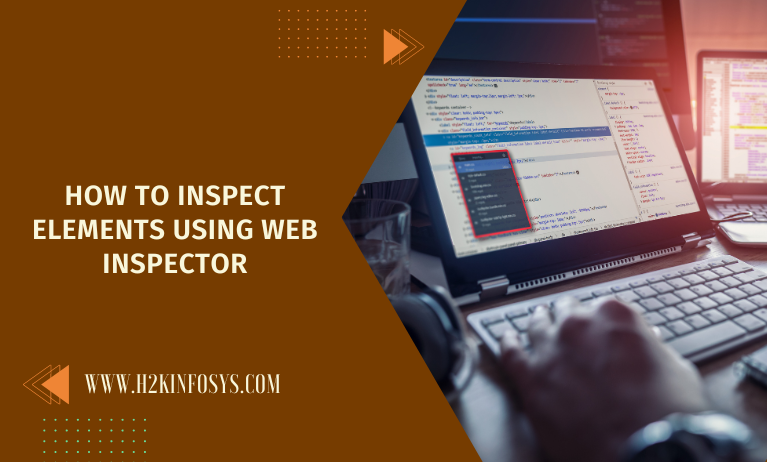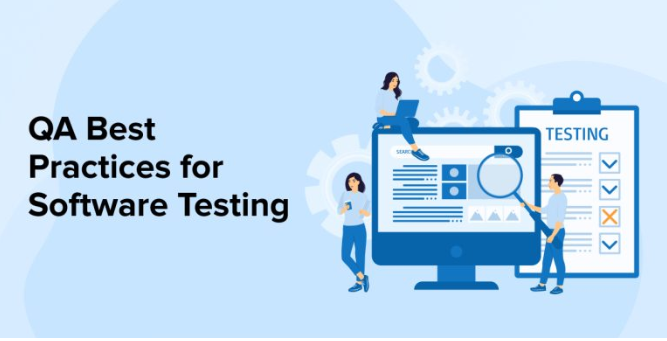As is common knowledge, online applications include Web Inspector JavaScript, CSS, and other dependencies in the HTML code, which the web browser then renders to display the application’s final look and feel. It is difficult for developers to make the necessary changes in the code files and then preview the browser changes because HTML code is not compiled but is instead rendered straight in the browser. This highlights the need for web browser features that allow users to edit JavaScript, CSS, and HTML right inside the browser. Even the concept of testers identifying and examining a browser element has emerged as a crucial concept in automated testing. An inspector for the web or a browser aids in locating the locators for the available elements on the web page, which we want to automate. In other words, it helps us to inspect elements.
Not to worry. You do not need to install any additional software to use this; it is already included in the browsers. Firefox, Internet Explorer, and Google Chrome all have similar web inspector features with a few minor nomenclature and feature modifications. We can look at these browsers’ parts using web developer tools. This post will concentrate on explaining how to use the web inspector in many contemporary browsers. Check out the Selenium course to learn more.
What is a web inspector?
As was already said, a web inspector or browser inspector aids in locating and identifying the contents of a web page in a browser. We can examine and play with the browser’s code while the web inspector is nearby to notice the abrupt changes to the screen. This is also commonly known as “inspecting an element”. The inspector displays the web page’s CSS, HTML, and JavaScript so that the developer or tester can examine it and use the features of the browser development tools to perform a few tests.
Examining the colour of some text on a website is a nice example. It gets tiresome if I keep trying to modify the colour code in my text editor, save the file, and then repeatedly refresh the website. I can do this by modifying the colour code in the browser’s web inspector for that specific line and seeing the changes immediately on the website. When I dismiss the browser, these modifications made to the web inspector will no longer be visible. Because of this, debugging becomes fairly easy and live, where the user can directly update the attributes within the browser only. Hence, you can go wild and experiment with anything!!
How to Inspect Elements In a web browser?
The simplest method is to right-click on the web page and choose Inspect rather than one of the other ways to open the web inspector and examine items on a web page. The web inspector can also be opened by using the following keyboard keys.
- CTRL+SHIFT+C on Windows
- Command + Shift + C on a Mac
For this article, a Google Chrome browser is being used.
Below is a demonstration using the Google Chrome browser as follows:
- To utilise the inspect panel’s full capabilities, it is worthwhile to read a comprehensive guide on the examining panel in Google Chrome.
- Knowing the components we want to examine is acceptable for the purposes of this session.
- This icon makes it possible to hover over a web element and analyse it. Any element on the website will be highlighted in the code Elements panel if you hover over it after clicking. This also occurs in reverse. The specific element in the web page will be highlighted when you hover over the corresponding code element.
Despite the fact that all browsers have a web inspector and are generally identical, there are still a few differences. Let’s look at how to launch the inspect panel in a few well-known web browsers.
How to inspect elements in Google Chrome?
To investigate web page elements in Google Chrome, simply follow these simple instructions.
- The examining panel can be accessed by pressing F12 or using the techniques mentioned above (right-click -> inspect) to launch the Google Chrome browser.
- When you open the examining panel, you’ll see that the top of the window has several tabs, including Elements, Console, Sources, Network, and Performance. The tab with all the HTML properties specific to the present web page, however, is the Elements tab.
- Once the browser inspector has been opened, select the Current Address text box. Automatically highlighted linked element locators can be seen on the right (below the Inspect Panel).
Note: We are currently at the Elements tab. Please open “Elements” first if any other tabs are open by default.
You may also investigate a web element by right-clicking it and choosing the inspect option.
Following a click on the Inspect context menu, the row linked to the element will be highlighted, and the Inspect panel will display all of the locator characteristics as seen below:
<input autocomplete=”off” placeholder=”Full Name” type=”text” id=”userName”
class=” mr-sm-2 form-control”>
In the aforementioned code, the Full Name text box’s properties would be placeholder, type, id, and class. You can enroll in the Selenium certification training if you’d want to read detailed instructions on evaluating Google Chrome items.
You can experiment with any of the characteristics or web elements; the text fields and web pages are only there for demonstration purposes.
Conclusion
To sum up, the web inspector is a window found in every browser that enables you to navigate the elements that produce the online page you view. Also, by using CTRL+SHIFT+C, a user can investigate an element. You can also edit the web element to view immediate changes to the user interface by inspecting the browser elements. But keep in mind that does not result in a lasting transformation in UI.

































